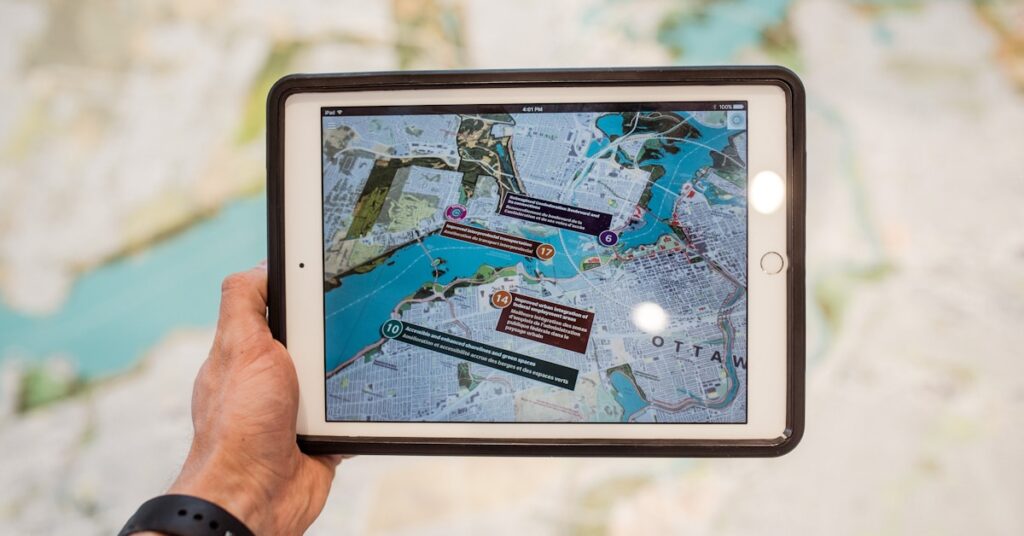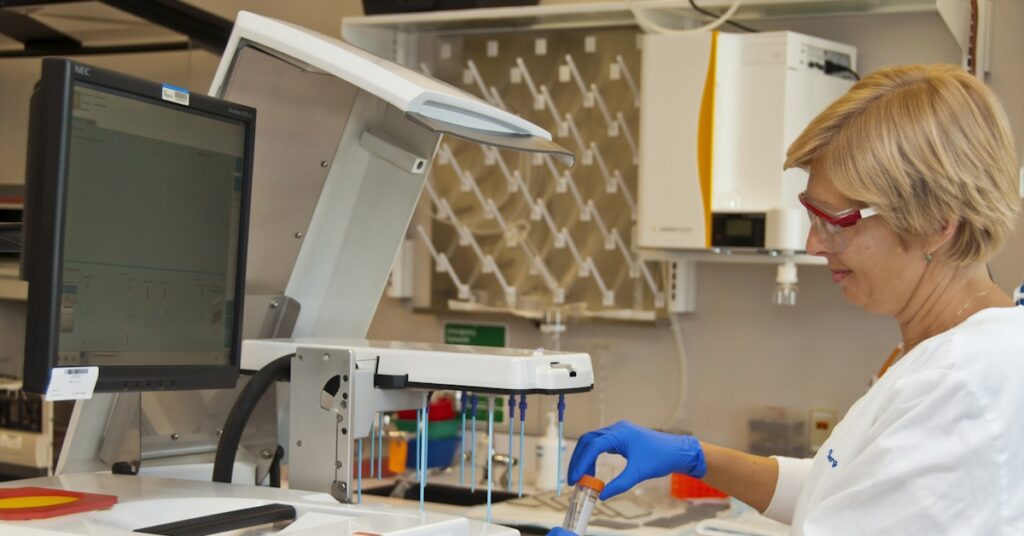Struggling to create engaging AR experiences?
It’s tough picking the right tool when facing dozens of options, conflicting reviews, and tight budgets for your specific industry.
The real fear is committing to a tool that fails to deliver a compelling user experience or integrate with your existing systems.
BrandXR predicts that by 2025, 60% of the U.S. population will be frequent AR users. This signals a massive demand for AR solutions that actually work.
The right software is the key to unlocking that potential and ensuring your AR projects deliver measurable ROI from the start.
While we’re discussing immersive experiences, understanding best mapping software is equally important for spatial applications.
In this guide, I’ll cut through the noise and review the best augmented reality software to help you build powerful, industry-specific experiences.
You’ll discover solutions that streamline development, ensure cross-device compatibility, and align with your budget and technical needs.
Let’s dive in.
Quick Summary:
| # | Software | Rating | Best For |
|---|---|---|---|
| 1 | Unity → | Mid-sized to enterprise firms | |
| 2 | PTC → | Industrial & manufacturing | |
| 3 | Zakeke → | Small & medium retailers | |
| 4 | EasyAR → | Enterprise-scale developers | |
| 5 | iStaging → | Real estate & small businesses |
1. Unity

Struggling with AR software that scales with you?
Unity offers powerful creation tools that handle complex real-time 3D projects across devices. This means your team can transform CAD and 3D data into immersive apps.
It helps you manage complex real-time 3D projects by providing expert support and creation tools that scale. This allows you to focus on innovation, not technical hurdles.
Here’s how Unity delivers.
Unity streamlines prototype development and ensures compatibility across various platforms, supporting over 20 end-user platforms. This lets you build and grow immersive experiences.
You can develop amazing games and industry applications across billions of devices, thanks to Unity’s comprehensive end-to-end tools and services for creation, launch, and growth. Additionally, Unity offers expert support and robust resources to get you started faster.
With Unity, you also get access to deep resources, online learning paths, and a dynamic community of creators, ensuring you have the knowledge and network to turn your vision into a successful business, from indie developers to large enterprises.
The result is scalable, engaging AR solutions.
Key features:
- Multi-platform deployment: Supports over 20 end-user platforms, enabling your AR experiences to reach billions of devices across various operating systems.
- Real-time 3D creation: Provides robust tools for transforming CAD and 3D data into immersive AR applications, simplifying complex project management for your team.
- End-to-end support: Offers comprehensive services for creation, launch, and growth, including expert support, learning resources, and a vibrant community.
Unity features, pricing, & alternatives →
Verdict: Unity stands out as a strong candidate for the best augmented reality software, especially for mid-sized to enterprise companies. Its ability to support over 20 end-user platforms and provide scalable tools for real-time 3D projects means you can reliably engage users and achieve measurable ROI, like the 82% of top 100 games using Unity.
2. PTC

3. Zakeke

4. EasyAR
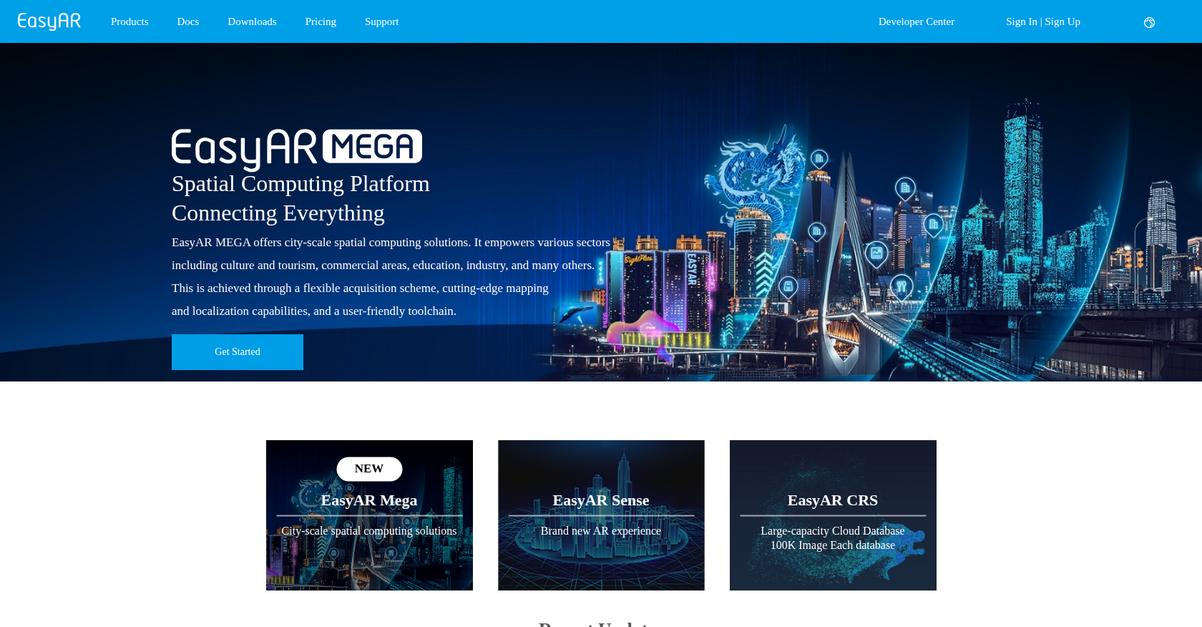
Struggling to find scalable AR solutions for your business?
EasyAR offers flexible data acquisition and city-scale spatial computing solutions. This helps you overcome information overload when evaluating numerous AR tools, streamlining your decision process.
This means you can easily develop prototypes and integrate AR into various sectors like retail or education, reducing stress over tool reliability and compatibility. You gain capabilities that align with diverse industry-specific use cases.
Here’s a deeper look.
EasyAR Sense provides a brand-new AR experience, crucial for achieving measurable ROI through increased user engagement. It supports both sparse and dense spatial maps, ensuring robust performance.
Additionally, features like persistence and multiplayer mode mean you can build complex, interactive AR applications. You can also deploy across iOS and Android devices, guaranteeing cross-device compatibility for your solutions.
EasyAR CRS (Cloud Recognition Service) complements this with a large-capacity cloud database, supporting up to 100K images per database for efficient image target search and management. This comprehensive ecosystem, coupled with efficient annotation and debugging tools, empowers your team to streamline development and ensure future-proof innovation.
The result? Enhanced customer experiences.
Before diving deeper into AR, you might find my analysis of time off tracking software helpful for managing your team’s administrative needs.
Key features:
- City-scale spatial computing: Empowers solutions across culture, tourism, commercial, education, and industrial sectors with flexible acquisition and mapping capabilities.
- Reliable AR experience: EasyAR Sense offers features like sparse and dense spatial maps, multiplayer mode, and collision/occlusion effects for immersive applications.
- Cloud-powered recognition: EasyAR CRS provides a large-capacity cloud database supporting 100K images, streamlining image target search and management for your projects.
EasyAR features, pricing, & alternatives →
Verdict: EasyAR is a strong contender for the best augmented reality software due to its robust city-scale spatial computing platform, flexible data acquisition, and support for over 200,000 developers. Its comprehensive features address critical pain points like scalability and cross-device compatibility, making it ideal for enterprises seeking future-proof AR solutions.
5. iStaging

6. echo3D
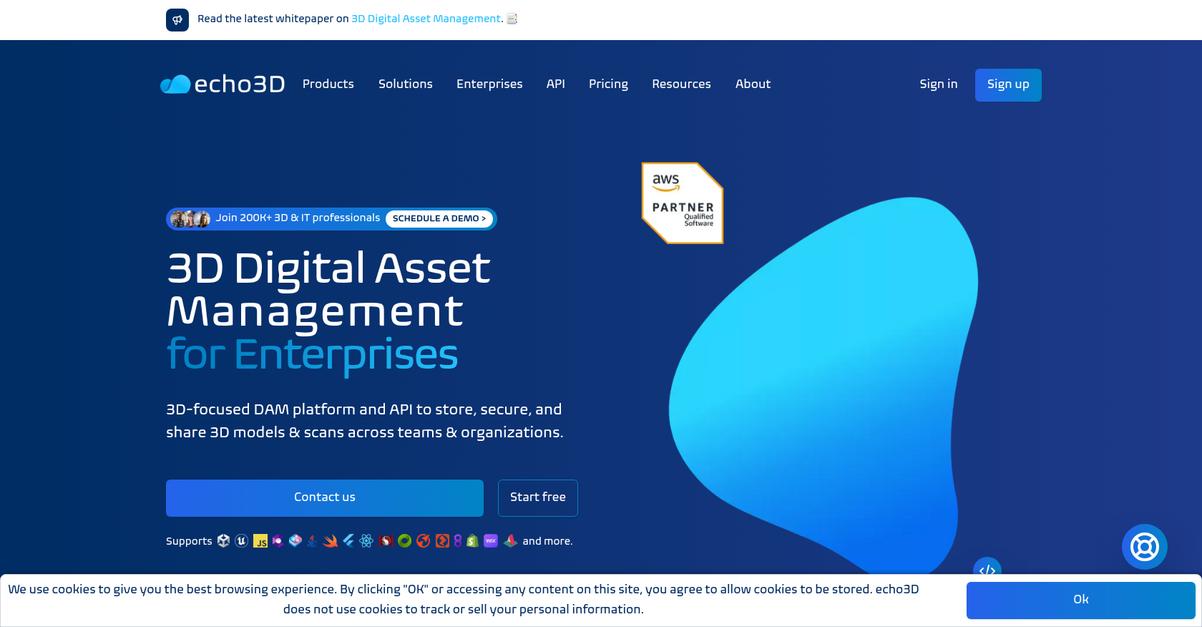
Struggling to manage your company’s AR content?
echo3D offers a 3D-focused Digital Asset Management (DAM) platform and API for storing, securing, and sharing 3D models and scans across your teams. This means you can simplify complex 3D workflows and keep your digital assets organized.
Here’s how echo3D solves common AR challenges.
It streamlines prototype development. This means you can get your projects off the ground faster.
echo3D helps you manage, update, and share 3D content easily, ensuring real-time delivery through the cloud. You can find 3D assets faster with AI-powered multimodal search, supporting text, image uploads, and similar model lookups. Additionally, you can stream optimized 3D assets to any web page, mobile device, headset, or game engine, ensuring fast loading and content delivery based on user location. Plus, powerful 3D optimization tools reduce model size without quality loss, enabling real-time rendering on devices with limited resources.
The result: a robust solution for your 3D content needs.
Speaking of managing complex content, if you’re also handling educational resources, my article on best course management system can provide valuable insights.
Key features:
- Simpler 3D Asset Management: Easily manage your 3D asset library across your organization, delivering cloud-updated 3D content in real-time, simplifying complex workflows.
- AI-Powered 3D Search: Find assets faster with multimodal search supporting text and image inputs, automatically detecting duplicates and leveraging AI-generated tagging for easy indexing.
- Cutting-Edge 3D Compression: Optimize 3D models to reduce file size without losing resolution, ensuring efficient storage, transfer, and real-time display on resource-limited devices.
echo3D features, pricing, & alternatives →
Verdict: echo3D is a strong contender for the best augmented reality software due to its comprehensive 3D Digital Asset Management, real-time cloud delivery, and AI-powered search capabilities. Its ability to simplify workflows and optimize 3D assets for various devices makes it ideal for enterprises navigating complex AR deployments.
7. Scope AR

Struggling to integrate AR into your existing systems?
You’re likely looking for an AR solution that scales and plays nice with your current tech stack. WorkLink by Scope AR lets you integrate with your existing PLM and MES systems.
This means you can streamline prototype development and ensure your AR solution fits perfectly into your operational workflows, reducing deployment anxiety. The result? A more efficient and effective AR implementation.
Scope AR’s WorkLink platform is designed to make AR mastery accessible, accelerating productivity across your enterprise.
This platform helps you create, view, collaborate, and manage AR content, ensuring your teams have the right information at the right time. For example, you can import any CAD file and build interactive AR experiences quickly, without needing extensive coding knowledge, directly from your web browser. This capability is great for non-technical teams, but still offers the depth developers need.
Additionally, WorkLink supports a wide range of devices, from iOS and Android smartphones to AR headsets like Microsoft Hololens 2 and Apple Vision Pro, helping you avoid expensive hardware investments and ensuring cross-device compatibility. This device-agnostic approach simplifies onboarding and boosts user engagement.
Achieve measurable ROI with real-time AR assistance.
While focusing on internal systems, managing external relationships is also crucial. For insights, check out my guide on best vendors management software.
Key features:
- Web-based no-code content creation: Easily transform CAD files into interactive AR experiences from any modern web browser, empowering non-technical users to build content.
- Comprehensive enterprise integrations: Seamlessly connect with your existing PLM, MES, and other enterprise systems, ensuring smooth data flow and efficient workflows for your organization.
- Device-agnostic accessibility: View AR content on major iOS and Android devices, plus leading AR headsets, providing flexibility and avoiding expensive hardware upgrades for your team.
Scope AR features, pricing, & alternatives →
Verdict: If you’re seeking the best augmented reality software for manufacturing, aerospace, or general industrial applications, Scope AR’s WorkLink platform is a strong contender. Its ability to accelerate productivity, cut installation time by 25%, and reduce training travel costs by $2.4 million makes it a compelling solution for scalable AR capabilities.
8. Onirix
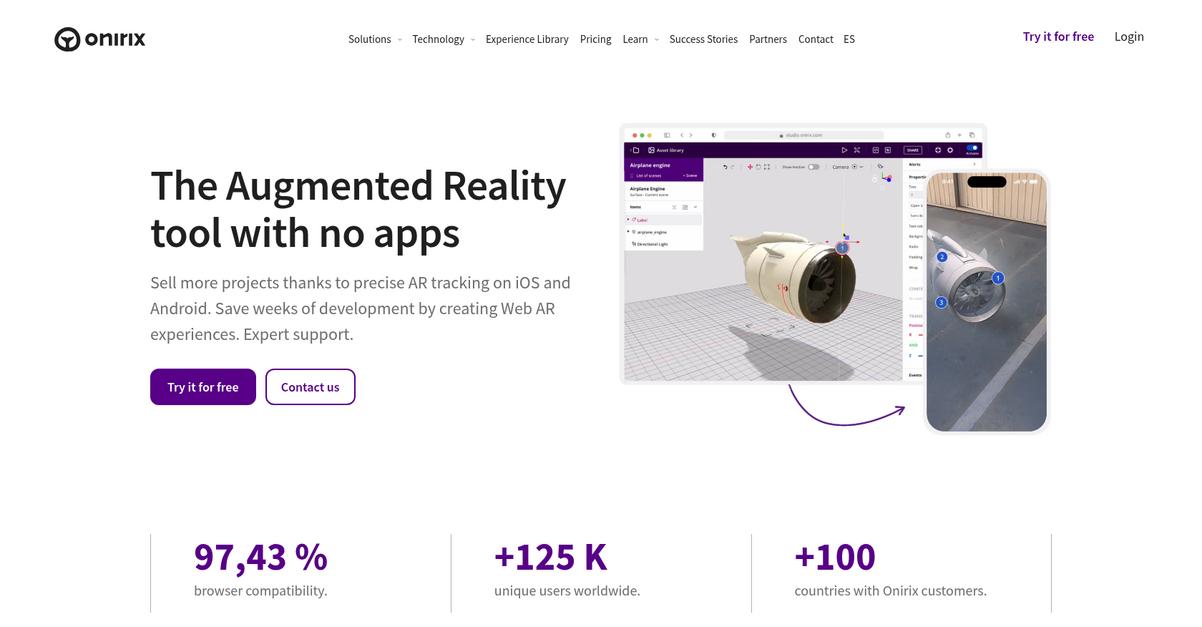
Conclusion
Choosing AR software is tough.
With dozens of options and conflicting reviews, it’s incredibly hard to find a tool that scales, integrates with existing systems, and doesn’t break your budget.
The real risk is committing to a platform that can’t deliver the immersive experiences users now expect. This mistake can drain your budget and set your AR strategy back by months, if not years.
Here’s what I recommend.
After reviewing all the options, Unity clearly stands out. It provides the power, flexibility, and scalability to overcome development hurdles and create truly engaging AR applications.
Its ability to support over 20 platforms while managing complex 3D projects is unmatched. In my experience, it’s the best augmented reality software for building future-proof, scalable experiences.
I highly recommend you check out Unity pricing and see how its powerful toolset can empower your next project.
You’ll build immersive experiences that scale effortlessly.
